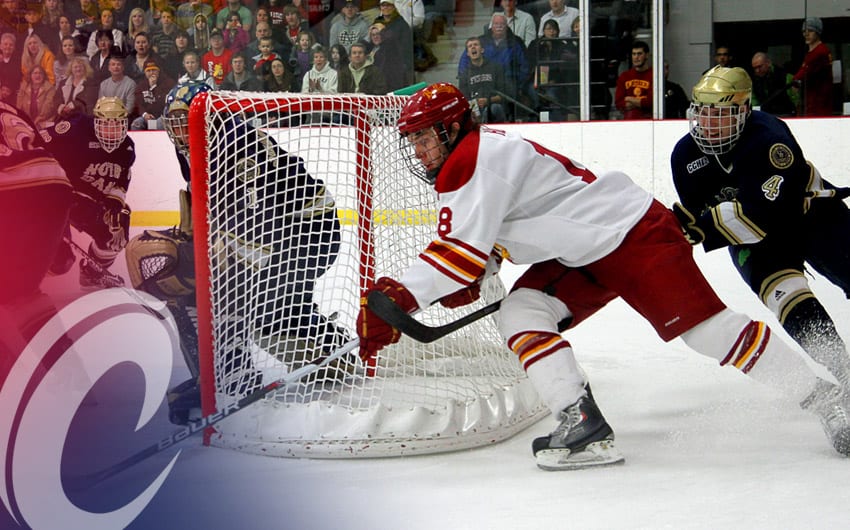Speed on the ice is defined by stride length times stride frequency. To improve your speed, you must improve one of these two factors.
 Improving strength and power in the lower body will aid in the improvement of frequency and is a particularly important aspect of off ice sports training. This improvement however may take some time. One simple and quicker way is to improve your stride length by increasing your flexibility. As a player finishes his or her stride their leg must fully extend, abduct and externally rotate. These muscles are typically tight in skaters, limiting a full, efficient stride length and slowing your speed on the ice.
Improving strength and power in the lower body will aid in the improvement of frequency and is a particularly important aspect of off ice sports training. This improvement however may take some time. One simple and quicker way is to improve your stride length by increasing your flexibility. As a player finishes his or her stride their leg must fully extend, abduct and externally rotate. These muscles are typically tight in skaters, limiting a full, efficient stride length and slowing your speed on the ice.
Two main muscle groups, the hip flexors (rectus femoris and psoas) and the groin (adductor brevis, longus and magnus) are not only tight in most skaters but are also the most commonly injured muscles in hockey. Spending a few minutes a day, especially before and after skating, can help improve the flexibility of these two muscle groups and improve your skating while helping prevent injuries.
Use this kneeling hip flexor and groin stretch to elongate your stride. Begin kneeling on one knee with your chest tall and upright. Slowly rock forward, extending the kneeling leg until you feel a stretch in the front of your hip, pause and rock back to the starting position. Repeat the stretch 5-10 times. When finished, rotate your front leg 90 degrees so your foot is pointing out to your side. Now start to rock sideways, stretching the groin muscles. Repeat the stretch 5-10 times and then repeat both stretches on the opposite leg. Perform 2-3 sets on each leg every day and you’re on your way to getting faster on the ice.

